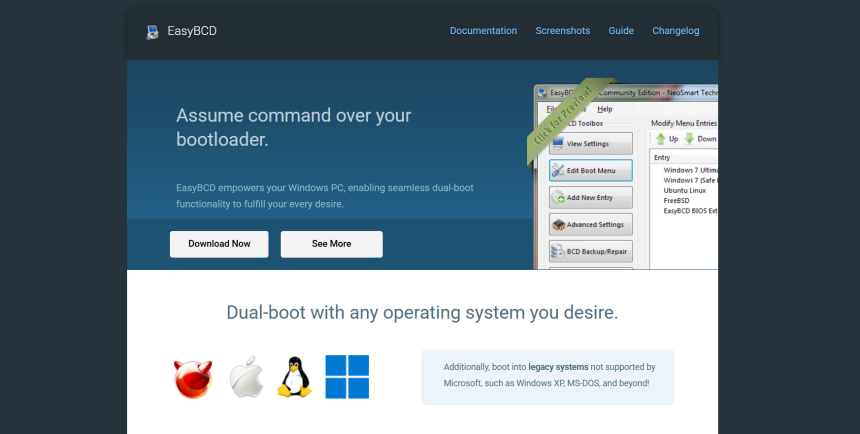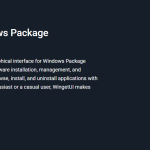Bootloaders are among the most critical components of any operating system. They are responsible for loading the OS kernel into memory and passing control to it during the system startup. When dealing with multi-boot systems or tweaking startup behaviors, editing the bootloader becomes necessary. However, bootloader configuration is a highly sensitive operation and can render a system unbootable if not done correctly. This is where EasyBCD comes into play — a powerful yet user-friendly utility designed for managing bootloaders with ease, particularly on Windows-based systems.
EasyBCD, developed by NeoSmart Technologies, is one of the most popular tools for bootloader configuration. It provides users with an intuitive graphical interface to manage boot entries, configure multi-boot settings, repair broken bootloaders, and tweak advanced settings, all without the need to work with the command line or deal directly with complex boot configuration files. This makes it especially attractive to both novice users and advanced system administrators.
Comprehensive Multi-Boot Support
EasyBCD’s core strength lies in its extensive support for multi-boot environments. Whether a user wants to install multiple versions of Windows, add a Linux distribution, or boot from ISO images and virtual disks, the software accommodates all these needs seamlessly. It supports adding entries for Windows (XP through Windows 11), Linux (GRUB, LILO, etc.), BSD, macOS (via Hackintosh configurations), and even older operating systems like MS-DOS.
Unlike traditional boot managers, which often require deep technical expertise and manual configuration, EasyBCD simplifies the entire process. Adding a new OS to the boot menu is as simple as selecting the OS type from a dropdown list, entering a name, and pointing to the correct drive or partition. The software automatically creates the necessary entries and adjusts the boot configuration data (BCD) accordingly.
User-Friendly Interface and Accessibility
The graphical interface of EasyBCD is one of its standout features. Many bootloader tools rely on command-line interactions, which can be intimidating and error-prone for non-expert users. EasyBCD, however, offers a clean and structured interface that guides users through each process.
Each section of the interface is clearly defined—whether it’s managing entries, backing up and restoring settings, or accessing advanced options. Users can easily view the current boot menu, rearrange the order of entries, set default OSes, and change timeouts with just a few clicks. This level of usability significantly reduces the learning curve and makes bootloader editing more accessible.
The ability to backup and restore BCD settings also adds a layer of safety. If anything goes wrong during the editing process, users can simply revert to a previously saved configuration. This gives peace of mind to those hesitant to make changes due to fear of rendering their systems unbootable.
Compatibility with Modern and Legacy Systems
Another reason EasyBCD stands out is its compatibility with a wide range of system configurations. It works seamlessly on both BIOS and UEFI systems, offering options tailored to each platform. In the age of hybrid and legacy systems coexisting, this dual compatibility ensures that users are not restricted based on their hardware or firmware environment.
For older BIOS-based systems, EasyBCD provides straightforward support and manipulation of the traditional boot.ini and ntldr-based mechanisms. For newer UEFI systems, it works with the modern Boot Configuration Data (BCD) store introduced in Windows Vista and continued in newer versions. It enables full control over UEFI boot entries, including adding EFI applications and managing boot priorities.
This flexibility ensures that EasyBCD remains a viable tool for a wide variety of users, from those maintaining old XP-based machines to power users working with cutting-edge Windows 11 installations and Linux dual-boots.
Support for ISO and Virtual Disks
Advanced bootloader configurations often include the need to boot from ISO files or virtual hard disk (VHD) images. EasyBCD supports these formats natively. Users can create boot entries that point directly to an ISO or VHD file stored on a local disk, allowing them to boot into live operating systems or pre-configured virtual environments without needing to burn the files to physical media.
This feature is particularly useful for IT professionals, system administrators, and enthusiasts who regularly test different OS environments. Instead of juggling bootable USBs or DVDs, they can boot into different images directly from the bootloader, saving time and reducing complexity.
Integration with Windows Boot Manager
Rather than replacing the existing bootloader, EasyBCD integrates directly with the Windows Boot Manager (bootmgr). This ensures a high level of stability and compatibility, as it builds upon the native tools provided by Windows. All modifications made through EasyBCD are reflected in the Windows BCD store, preserving system integrity and compatibility with Windows updates and recovery environments.
This also means that users can manually revert changes using native Windows tools like bcdedit or the Windows Recovery Environment if necessary. By leveraging the official bootloader infrastructure, EasyBCD minimizes the risk of creating a non-bootable system while maximizing control and customization.
Advanced Bootloader Tweaks
Beyond basic boot menu management, EasyBCD also offers a suite of advanced tools for power users. These include options to modify the bootloader path, adjust bootloader timeout values, set custom boot parameters, and even hide or rename partitions from certain operating systems.
Advanced diagnostics are also available, such as viewing the raw BCD entries, rebuilding the bootloader from scratch, and configuring bootloader behavior in various scenarios (e.g., dual-booting Windows and Linux with separate drives).
These features cater to users with unique requirements, such as developers working with embedded systems, or technicians configuring custom recovery environments. While these features may not be necessary for casual users, their inclusion enhances the overall utility of the tool for professional use.
Community and Documentation Support
The effectiveness of a software tool is often enhanced by the strength of its documentation and community. EasyBCD benefits from a well-maintained knowledge base, detailed user manuals, and an active user forum hosted by NeoSmart Technologies. These resources provide clear explanations, troubleshooting tips, and real-world usage examples that help users navigate complex boot scenarios.
In addition, the software is frequently updated to support new versions of Windows, UEFI improvements, and other modern computing needs. This active development ensures continued reliability and compatibility, which is essential in the rapidly evolving landscape of operating systems and hardware platforms.
Portability and Lightweight Design
EasyBCD is a lightweight application that installs quickly and requires minimal system resources. Its portable design allows it to run even in restricted environments. For instance, IT technicians can install it on a USB drive and use it to configure multiple machines without needing a full setup on each system.
Its small footprint and fast performance make it ideal for deployment in environments where efficiency and speed are paramount. Additionally, because it doesn’t run as a background process or require constant updates, it remains unobtrusive and efficient.
Safe Editing Environment
Modifying the bootloader is inherently risky. A single misstep can lead to an unbootable system and data loss. EasyBCD mitigates this risk through built-in safety mechanisms, including:
- Confirmation prompts before critical changes
- Automatic backups of BCD entries
- Warning messages when attempting high-risk operations
- Simple one-click rollback functionality
These safety features are particularly valuable for users who may be unfamiliar with the intricacies of bootloaders but still need to make changes for dual-booting or recovery purposes.
Practical Applications in Real-World Scenarios
EasyBCD finds practical use across a range of real-world scenarios. Home users often rely on it to set up dual-boot systems with Windows and Linux. IT professionals use it for repairing corrupted boot records in enterprise environments. Developers and testers benefit from its support for booting into virtual environments and ISO images for testing purposes.
In educational institutions, it’s a valuable tool for setting up multi-OS labs. In cyber forensics and data recovery, booting from live environments without modifying the system disk is made easier through EasyBCD’s ISO boot capabilities.
Conclusion
EasyBCD has proven itself to be an indispensable tool for anyone needing to modify or manage their bootloader, especially within Windows environments. Its intuitive design, robust feature set, and wide compatibility make it a preferred choice for beginners and professionals alike. Whether configuring a simple dual-boot setup or managing a complex multi-OS workstation, EasyBCD offers the flexibility, safety, and efficiency needed to get the job done without complications.









